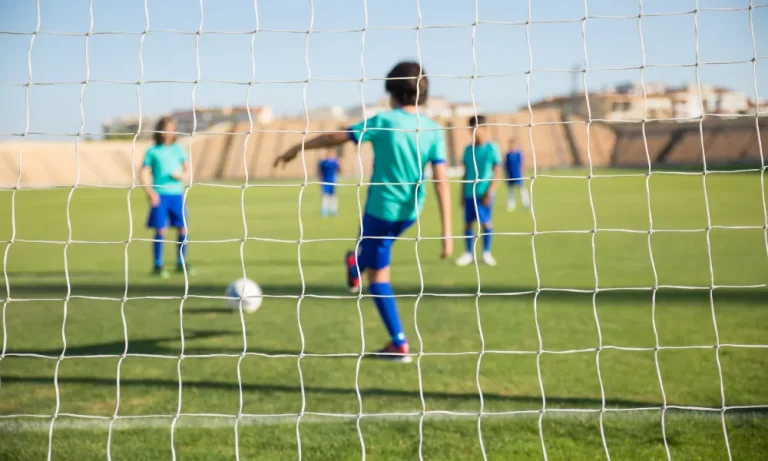What does ‘NOT Spiking the Ball’ Figuratively mean in Football?
Introduction
Are you a football fan? If so, you may be familiar with the term “spiking the ball.” It’s a move that players often use to celebrate a touchdown or stop the clock. But have you ever wondered what it means to “not spike the ball” in a figurative sense? In this article, we will dive into the intriguing concept of what it truly means when football players choose not to spike the ball. Understanding this phrase is crucial to grasping the nuances of the game and the strategic decision-making involved. So, let’s explore the figurative meaning of “not spiking the ball” in football.
What is Spiking the Ball in Football?
In football, “spiking the ball” refers to a deliberate action where the quarterback forcefully throws the ball into the ground immediately after receiving the snap. This move is typically executed to stop the game clock and halt the play. It is a legal move and often used strategically to manage time during critical moments of the game.
Players spike the ball when they want to create a stoppage in play, mainly to save time. This tactic is commonly employed when the offense is running out of time and needs to stop the clock to regroup, plan their next move, or attempt a field goal. By spiking the ball, the offense effectively halts the game clock, giving them a chance to reset and strategize for the upcoming play.
Numerous famous instances highlight the effective use of spiking the ball in football. For example, in Super Bowl XLII, during the final drive, the New York Giants’ quarterback, Eli Manning, skillfully spiked the ball with only seconds remaining on the clock. This strategic move allowed the Giants to maintain control of the game, regroup, and ultimately secure a stunning victory. Such instances demonstrate how spiking the ball can be a game-changing tactic when used wisely and timed perfectly.
The Figurative Meaning of ‘Not Spiking the Ball’
In football, the phrase “not spiking the ball” extends beyond its literal interpretation. It is often used figuratively as a metaphor for maintaining composure in high-pressure situations. Just as a quarterback may choose not to spike the ball to keep control of the game, players and individuals can apply this concept to their own lives.
When we talk about “not spiking the ball” figuratively, we refer to the ability to stay calm, collected, and focused when facing challenges. It signifies the importance of maintaining composure and not succumbing to panic or making rash decisions under pressure. This concept emphasizes the need to think strategically and make calculated choices rather than reacting impulsively.
The figurative meaning of “not spiking the ball” in football aligns closely with decision-making and strategic thinking on the field. Just as a quarterback carefully considers whether to spike the ball or not, players must assess the situation, weigh their options, and make informed choices. It underscores the significance of analyzing the circumstances, understanding the game plan, and adapting to the ever-changing dynamics of the game.
The Importance of Not Spiking the Ball in Football
Not spiking the ball figuratively in football holds several benefits that can positively impact players and teams. By maintaining composure and avoiding impulsive reactions, players can enhance their focus, make better decisions, and maintain control of the game.
When players choose not to spike the ball figuratively, they can stay focused on the task at hand. By remaining composed, they avoid distractions and can fully assess the situation, identify opportunities, and execute their plays effectively. This heightened focus enables players to anticipate the movements of their opponents and make more accurate decisions in real-time.
Furthermore, not spiking the ball figuratively allows players to make better decisions under pressure. By staying calm, they can think more clearly, weigh their options, and choose the most strategic course of action. This level-headedness helps minimize errors and maximize the chances of success, even in high-stakes situations.
Several players and teams have excelled at not spiking the ball figuratively, leading to remarkable achievements. For instance, Tom Brady, widely regarded as one of the greatest quarterbacks in football history, consistently displays composure and decision-making prowess throughout his career. His ability to stay calm under pressure has contributed to his numerous Super Bowl victories and overall success.
Similarly, teams like the New England Patriots, known for their disciplined and strategic approach, have thrived by not spiking the ball figuratively. Their ability to maintain control, adapt to challenging situations, and mak
Strategies for Not Spiking the Ball
To avoid figuratively spiking the ball in football, there are practical tips and strategies that players can employ. Staying calm, analyzing the situation, and making calculated decisions are crucial elements in maintaining composure and achieving success.
First and foremost, it is essential to stay calm under pressure. Taking deep breaths and focusing on the present moment can help alleviate stress and anxiety. By keeping emotions in check, players can think more clearly and avoid impulsive reactions that may hinder their performance.
Analyzing the situation is another key strategy. Players should take the time to assess the field, evaluate the positions of their teammates and opponents, and identify potential opportunities. This careful observation allows for a better understanding of the game’s dynamics and helps in making informed decisions.
Making calculated decisions is paramount. Instead of acting impulsively, players should weigh their options and consider the potential outcomes of each choice. This strategic thinking enables them to select the most advantageous course of action, increasing the chances of success.
Professional players often employ techniques to stay composed under pressure. Visualization exercises, where they imagine themselves successfully executing plays, can boost confidence and calm nerves. Additionally, practicing mindfulness and focusing on the present moment helps in maintaining concentration and making clear-headed decisions.
Common Misconceptions about ‘Not Spiking the Ball’
There are some misconceptions and misunderstandings surrounding the figurative meaning of “not spiking the ball” in football that need to be addressed. It is important to clarify any confusion between the literal and figurative usage of the phrase and debunk any myths or stereotypes associated with this concept.
Firstly, it’s crucial to understand the difference between the literal and figurative meaning of “spiking the ball.” Literally, spiking the ball refers to a move where a player forcefully throws the ball into the ground after a successful play. However, in a figurative sense, not spiking the ball means refraining from celebrating prematurely or becoming complacent after a small victory.
One common misconception is that not spiking the ball implies a lack of enthusiasm or passion. This is not true. Not spiking the ball figuratively does not mean players should suppress their emotions or downplay their achievements. Rather, it emphasizes the importance of staying focused, maintaining composure, and making calculated decisions to ensure long-term success.
Another misconception is that not spiking the ball figuratively implies a passive approach to the game. On the contrary, it encourages players to remain proactive, constantly analyze the situation, and adapt their strategies accordingly. It is about avoiding impulsive reactions and maintaining control over the game, rather than being passive or disengaged.
The Impact of Not Spiking the Ball on Team Dynamics
The ability to not spike the ball figuratively has a significant impact on team dynamics in football. It fosters a culture of composure and strategic decision-making, with leadership playing a crucial role in shaping this mindset. Effective communication and trust among teammates are also vital in successfully avoiding figurative spikes.
When players have the ability to remain composed and make calculated decisions, it positively influences the overall team dynamics. It promotes a sense of discipline and focus, leading to better teamwork and coordination on the field. This composure allows players to adapt to changing situations, make sound judgments, and execute plays effectively.
Leadership plays a pivotal role in fostering a culture of not spiking the ball. Strong leaders set the tone for the team, emphasizing the importance of staying calm and making strategic decisions. They lead by example, demonstrating composure under pressure and encouraging their teammates to do the same. This leadership creates an environment where players feel supported and motivated to perform at their best.
Communication and trust are essential components in successfully avoiding figurative spikes. Effective communication ensures that players are on the same page, understanding the game plan and each other’s roles. Trust among teammates allows for seamless cooperation and encourages players to rely on one another, knowing that everyone is committed to making the best decisions for the team’s success.
What does ‘not spiking the ball’ figuratively mean in football?
Figuratively, ‘not spiking the ball’ means refraining from prematurely celebrating or becoming complacent after a small victory, emphasizing focus and strategic decision-making.
How does ‘not spiking the ball’ affect team dynamics?
It promotes composure, discipline, and better teamwork, allowing players to adapt to changing situations and make sound judgments on the field.
What role does leadership play in fostering a culture of not spiking the ball?
Leadership sets the tone, emphasizing the importance of composure and strategic decision-making, leading by example to motivate and support teammates.
Why is effective communication crucial in avoiding figurative spikes?
Effective communication ensures players are aligned, understanding the game plan and each other’s roles, leading to seamless cooperation and better decision-making.
How does trust among teammates contribute to avoiding figurative spikes?
Trust encourages players to rely on each other, knowing everyone is committed to making the best decisions for the team’s success, fostering unity and cohesion.
Conclusion
In conclusion, we have unraveled the figurative meaning of “not spiking the ball” in football. It goes beyond the literal act of celebrating or stopping the clock. Instead, it represents the importance of maintaining composure, making calculated decisions, and staying in control of the game, both on and off the field. By understanding this concept, football players can enhance their performance and teamwork, but it doesn’t stop there. We encourage you to apply the concept of not spiking the ball to your own life and decision-making processes. Remember, staying composed under pressure and thinking strategically can lead to success in various aspects of life. So, next time you watch a football game, remember the deeper meaning behind “not spiking the ball” and let it inspire you to make better choices in your own journey.



